Starting to understand bathroom plumbing begins with knowing toilet parts. If you're fixing toilet repair parts or just curious, this guide from HOROW, a well-known toilet brand, is for you. It covers important components that make your toilet work. Knowing about toilet tank parts helps with maintenance and fixing things when needed. Let's explore flappers, valves, and flush mechanisms, the key parts of bathroom plumbing parts.
Knowing the Components can Help with Repairs and Maintenance
Knowing about the bathroom repair materials, can help you save money, and avoid plumbing troubles, at home. It's important to understand, how each part works, and how they work together. This way you can quickly spot any issues, that come up and decide whether to fix them, with a toilet repair kit or call in a professional for help.
Besides, regularly maintaining your toilet can extend the lifespan of its components. Improve functionality, over time by familiarizing yourself with parts such as flappers and valves to inspect and replace them when necessary using bathroom repair components to ensure your toilet operates effectively and prevent common problems, like leaks or constant running.
The Tank
Understanding the workings of the toilet tank is key, to ensuring it functions, and efficiently manages water usage, in your bathroom space.It's crucial to comprehend, how these components work to troubleshoot, and resolve any issues, that might crop up over time.
Purpose of the Toilet Tank
The primary function of the toilet tank is to store the water needed for a mechanism, in the toilet system.When the flush handle is pressed it releases this water initiating a flushing process that effectively clears everything from the bowl.
Key Components inside the Tank
In the toilet tank lie components such, as the fill valve and the flush valve that regulate the inflow and outflow of water during flushing.
- The fill valveensures that the tank refills correctly after flushing without causing overflow issues.
- The flush valveis responsible, for releasing the tanks stored water into the bowl to initiate the flushing process.
- A flapper valveis a rubber mechanism that opens during flushing to allow water into the toilet bowl and then closes to maintain the water level.

Understanding the components of your toilet can assist you in maintaining its operation more effectively enabling you to perform maintenance tasks intelligently and address problems promptly.
The Bowl
Toilet bowls are key to how a toilet works, smartly moving water and waste. The toilet bowl parts, especially the siphon, are crucial for the flush, making sure waste goes down easily. This not only shows off smart design but also keeps the bathroom clean. Picking a bowl type, round or elongated, affects comfort and how much space it uses in the bathroom.
Functionality and Design of the Toilet Bowl
Every toilet is meticulously crafted to ensure efficient flushing and prevent clogs by manipulating the flow of water and waste through its fitted shape and size, within the plumbing system for purposes.This configuration helps facilitate the siphoning process by generating the pressure to initiate flushing actions.
Siphon Mechanism and Its Role in Flushing
The siphon system plays a role, in toilets by directing everything in the bowl towards the drain when you press the flush button to ensure proper waste removal and refill the bowl with fresh water afterward Understanding this mechanism can assist you in resolving typical toilet problems.
Operation
When you push the handle to flush the toilet bowl it fills with water from the tank. A pressure difference is created in the tube due, to the sudden flow of water.The rising water levels trigger the effect which helps in pulling waste through the tube and, into the drainage system.
Two Types of Siphon Mechanism
S-Trap: Commonly used in many toilets, characterized by an S-shaped pipe, that helps maintain a water seal.
P-Trap: Less common, typically used in some older designs.

Ceramic Body of A Toilet Bowl: The Most Common Material
As we all know, ceramic is one of the most common materials in toilet manufacture. This type of toilets is good or bad depending on the glaze. The ceramic body of the toilet bowl is divided into two parts - the embryonic body and the glazed surface. The embryo body is the solid part inside. The material is relatively rough, and it is easy to absorb water; The glaze is the part of the toilet surface that we see, which is smooth and reflective, and does not absorb water.
The firing temperature determines the glaze of the ceramic. Generally speaking, the higher the firing temperature of ceramics, the smoother the glaze. The smoother glaze is not easy to hang dirt. In fact, the firing temperature between 1250~1280°C is better.The method of testing the quality of the glaze is relatively simple. Take a pencil to draw a few more times on the glaze. If it is a good product, the dirt can be easily wiped off by hand. There exists another concept of "self-cleaning glaze". A true self-cleaning glaze technically adds metallic silver to the glaze to sterilize with heavy metals.
Different Types of Bowls: Round vs. Elongated
When selecting between an elongated or round bowl consider the size of your bathroom and your personal preference as deciding factors.Elongated bowls offer comfort due, to their shape while round bowls are ideal, for maximizing space in bathrooms.

Here is a table showing the details of their differences.
|
Feature |
Round Toilet Bowls |
Elongated Toilet Bowls |
|
Shape and Design |
Compact, circular shape; fits well in smaller spaces. |
Oval shape; provides more seating area and comfort. |
|
Comfort |
Generally less comfortable for taller individuals. |
More comfortable due to the extended seating area. |
|
Space Requirements |
Requires less space, making it ideal for small bathrooms. |
Takes up more space, better suited for larger bathrooms. |
|
Cleaning |
Easier to clean due to the compact design. |
May require more cleaning time due to the larger surface area. |
|
Aesthetic Appeal |
Classic design; blends well with traditional decor. |
More modern look; often preferred for contemporary bathrooms. |
|
Cost |
Typically more affordable than elongated models. |
Usually more expensive due to size and comfort features. |
The Seat and Lid
Understanding different toilet seats and lids is key for your bathroom's look and use. Choices vary from simple to advanced soft-close models. Knowing these can improve your bathroom's design.
Types of Toilet Seats: Standard Vs. Soft-Close
Traditional seats are highly valued for their design and resilience; in contrast modern seats are seen as refined due, to their soft closing mechanism that offers added protection to both the seat and the bowl.
|
Feature
|
Standard Toilet Seats
|
Soft-Close Toilet Seats
|
|
Mechanism
|
Hinges that allow the seat to close quickly
|
Hinges designed to close slowly and quietly
|
|
Noise Level
|
Can slam shut, creating noise
|
Closes quietly, reducing noise
|
|
Safety
|
No specific safety features; can pinch fingers
|
Safer for children and pets due to slow closing
|
|
Installation
|
Generally easy to install; standard fittings
|
Installation is similar but may require extra care due to mechanism
|
|
Durability
|
Basic durability; may wear out over time
|
Often built with higher quality materials for longevity
|
|
Cost
|
Usually less expensive.
|
Typically more expensive due to soft-close feature.
|

Seat Materials and Qualities: UF Seat Vs PP Seat
In terms of seat materials and its qualities, here comes to two kinds of materials-UF seat & PP seat. What's the differences between these two materials? Are you curious about it?
The following table offers you detail information. Let's unveil the secrets with HOROW.
|
Style/Material |
PP Toilet Seat |
UF Toilet Seat |
|
Texture |
Plastic & Flexible |
Ceramic & Hard |
|
Anti-Scratch |
NO |
YES |
|
Anti-Aging |
5-8 Years |
Never Aging |
|
Anti-Fall |
Unbreakable |
Fragile |
|
Environmental |
Non-degradable |
Natural Degradation |
|
Bearing Weight |
250KG |
400KG |
|
Installation |
Traditional |
Quick-release |
|
Rating |
General |
Advanced |
|
Features |
Polypropylene, Thermoplastic |
Urea-Formaldehyde, Thermoset |
|
Common Plastic |
High-quality Material and Aesthetically Looks Like Ceramic |
|
|
Soft Closing Scat |
Unscratchable |
|
|
Descends Slowly and Quickly |
Very Easy to Clean and Longevity |
|
|
Not Scratch Resistant |
Hard, Brittle and Fragile |
Proper Seat Maintenance and Replacement Tips
Maintaining the cleanliness and functionality of toilet seats is important, for their longevity and performance. It is advisable to clean them using cleaning products to prevent any damage, to the material. When replacing a toilet seat ensure that it is compatible and fits properly with the components of your toilet.
Selecting the components, for your toilet seat and understanding how to maintain them can enhance both the functionality and aesthetics of your bathroom resulting in a cohesive overall theme, for your space.
The Trapway
In toilets the trapway plays a role as it is essential, for functionality and hygiene purposes by facilitating the movement of waste from the toilet, to the sewer lines – making it a significant component to consider when handling toilet hardware components.
Definition and Purpose of the Trapway
The trapway is found at the toilet's base. It's a curved channel that makes waste disposal efficient. Its curve also stops sewer gases from getting back into the bathroom. Good quality toilet gaskets and bathroom repair parts ensure it works well.
How It Prevents Sewer Gases from Entering Your Bathroom
The primary function of the trapway is to maintain a water seal that prevents gases from the sewer from entering your living space.The presence of a maintained trapway, along, with high quality toilet gaskets helps ensure an pleasant smelling bathroom environment.
Differences in Trapway Design: Visible vs. Concealed
Over the years toilets have undergone changes, in their designs with some models having trapways that are simpler to fix while newer bathrooms often choose concealed trapways for a more streamlined look and simpler upkeep.
Ensuring the trapway of your toilet is well maintained is crucial to prevent leaks and ensure functionality whether its visible or concealed in your bathroom as the type of trapway selected can impact both the appearance and operation of your bathroom space.
Here is a comparison chart outlining the distinctions, between exposed and hidden toilet trapway configurations.
|
Feature |
Visible Trapway |
Concealed Trapway |
|
Visibility |
Exposed, easily seen |
Hidden behind the ceramic shell |
|
Appearance |
More traditional look |
Sleek and modern appearance |
|
Ease of Repair |
Generally easier to repair |
Repairs can be more complicated |
|
Cleaning |
Requires more cleaning |
Easier to clean, fewer visible crevices |
|
Function |
Directs waste away |
Directs waste away |
Visible trapway and concealed trapway, serve the same function, but different in their appearance and practical aspects.
The Wax Ring and Base
The toilets wax ring plays a role that is sometimes taken for granted until leaks become an issue in the bathroom area.It establishes a seal, between the bottom of the toilet and the plumbing system to prevent water leakage.With toilet bolts and nuts it ensures a solid and watertight installation.
What is a Wax Ring and Why it’s Essential for Sealing
Making sure that the wax seal on a toilet is, in condition is important to stop water and unpleasant sewer smells from getting into your home and causing problems because of a damaged or faulty wax ring.
How the Toilet Base Connects to the Plumbing
Attaching the toilet, to the ground requires securing it with bolts and nuts and align it properly with the pipes to ensure it stays in place securely and prevents any shifting or damage, to the seal.
Installation and Replacement of the Wax Ring
Swapping out a wax ring might appear challenging at glance; however it's crucial, for preventing leaks from occurring in your toilet systems setup process or in case leaks become noticeable over time when reinstalling the toilet fixture. To ensure a replacement process and leak free performance going forward after installation or repair work is completed on the toilet unit itself; it's important to make sure that the new wax ring is positioned correctly and securely fastened down with bolts anchoring the toilet, in place.
Take a look, at the details provided below regarding the types of wax rings along, with their sizes and corresponding bolts and nuts.
|
|
Toilet Wax Ring Size |
|
|
Diameter |
3-inch |
4-inch |
|
Thickness |
Regular thick |
Extra thick |
|
Notes For Installation |
1. Measure the diameter of the waste opening on the bottom of the toilet. 2. Pick a wax ring with the diameter the same as that of the opening. |
1. Check the exact position of the flange setting on the floor. 2. If the flange is set on top of the finished floor, choose a regular wax ring. If the flange is set on the subfloor, choose a thicker wax ring. |
The Flush Mechanism
Diving into different toilet flush mechanisms helps us get how bathrooms work. From old-style gravity-fed systems to modern dual-flush options, each handles waste its own way. We'll look into how these systems work. We'll see their part in saving water and managing waste well.
Overview of Different Flushing Mechanisms: Gravity-fed, Pressure-assisted, Dual-flush
Choosing a flush mechanism affects water usage and toilet performance. Gravity-fed systems use water weight for flushing, simple yet effective. Pressure-assisted toilets add pressurized air for a stronger flush, helping avoid clogs. Dual-flush options let you pick a full or reduced flush, saving more water. Each system uses specific parts and a designed valve for water flow and release.
How Each System Works to Move Waste Effectively
Gravity-fed toilets are reliable, using a flush handle and gravity for waste removal. Pressure-assisted toilets mix water and compressed air to push waste down forcefully. Dual-flush designs allow controlling water use per flush, cutting down water use over time.
Knowing about flush mechanisms helps with fixing and upkeep. It also lets homeowners make smart choices for better toilet performance. This leads to savings on water bills. Whether tweaking your current system or putting in a new one, knowing the right toilet parts and their function is vital for a good setup.
Water Supply and Shutoff Valve
Maintaining a dependable bathroom plumbing setup is essential beginning with the water supply line and the shutoff valve as these components play a role, in ensuring the operation of your toilet on a daily basis by regulating water flow and preventing issues from escalating further.
The role of the water supply line
The water supply pipe plays a role, in delivering water to your toilets tank. Can be constructed of copper tubing or PVC piping or even flexible braided material like hoses, for added flexibility and durability The type of material used and the overall condition of the water supply line significantly impact the safety and efficiency of your toilets plumbing system.
How to locate and operate the shutoff valve
The handle, for turning off the water in the toilet is situated near the floor or wall area below it. Is responsible for regulating the flow of water into the toilet by turning it on or off when required for use or maintenance purposes. Understanding where it is located and how it works is important as it plays a role, in preventing water related issues and reducing repair expenses considerably.
Troubleshooting common water supply issues
If there are any issues, with the water supply in your toilet. Leaks or blockages. It's important to inspect these areas to catch any problems early on. Be sure to check for damage or blockages in the shutoff valve and water supply line if you notice any changes, in water flow or if it stops altogether.
Understanding the components of your bathrooms plumbing is a move as it ensures your toilet functions properly and prevents issues while maintaining efficiency in your bathroom space—a crucial aspect, for a well maintained bathroom setup.
Maintenance and Common Toilet Issues
Make sure to maintain your toilet to prevent the need, for repairs as staying on top of upkeep is key for homeowners to handle issues on their own.
Tips for Regular Toilet Maintenance
To maintain the functioning of your toilet, over time perform inspections and maintenance tasks. Check the toilet tank levers and seals for any signs of wear. Ensure that all moving components are operating correctly. Regularly cleaning the toilet is beneficial for cleanliness as, for monitoring the overall condition of the unit.
Identifying and Fixing Common Problems
Common problems, like toilets that run continuously or have flushing power and leaks are occurrences that can typically be resolved by replacing parts for toilet repairs.One should pay attention to the following when addressing these issues;
- If your toilet keeps running it could be due, to a flapper. Fill valve that needs replacing if they're worn out.
- If the flush seems weak in your toilet system it could be due, to clogged holes, beneath the rim. Use a mirror to check and unclog them for flushing efficiency.
- Check for any leaks, around the base of the toilet as water pooling there may indicate a need to replace the seals.
Applying these tips, for toilet upkeep can address problems ensuring that your bathroom functions smoothly and remains tidy.
Perfect HOROW Toilets for Your Daily Life
Enhancing your bathroom with HOROW toilets can improve functionality. Elevate its appeal simultaneously. Whether your preference leans towards a high tech toilet or a traditional design HOROW offers a range of choices that blend features, with elegant styles.
Choosing the toilet is essential, to incorporating convenience and modern technology into your home decor scheme so lets explore a selection of options offered by HOROW that cater to various preferences and styles.
Smart Toilet: HOROW Best Bidet Toilet Combo Heated Toilet Seat Elongated Model T05
Effortless installation, elegant simplicity, and optimal cleanliness are integrated in HOROW Model T05. It is smart one-piece toilet with bidet features 4-way flushing options - auto, foot touch, remote, and manual control. One of its amazing feature is the intelligent night light, which enhances visibility for nighttime use.


One Piece Toilet: HOROW 10 Inch Rough In Toilet Black One Piece Toilet Model T0338B-10
With a height of over 17.3" and elongated bowl design, the T0338B-10 Toilet provides added comfort. Its tensioned hinges ensure a soft close, to ensure that each use of the toilet does not cause embarrassing and disturbing noise.

Two Piece Toilet: HOROW Best 2 Piece Toilet Round Skirted Toilet Model HWTT-R01S
The HWTT-R01S two piece toilet is reliable and has a timeless design. It is a single flush toilet. The 1.28GPF with WaterSense certification ensures thorough flushing while saving water. Its 17.5 inch height toilet bowl is ADA compliant and the rounded bowl provides extra room for legs for improved comfort. In addition to this, its 360° jet siphon flushing technology ensures no clogging.

Wall Hung Toilet: HOROW Wall Hung Bidet Toilet Luxury Smart Toilet Model G10
The most desirable wall mounted bidet toilet deserves our own! HOROW Wall Hung Bidet Toilet Luxury Smart Toilet Model G10 can save up to 12 inches of space compared to toilets with cisterns. Its multi level adjustable water temperature and pressure, and the forward and backward moving stainless steel nozzle can provide the best cleaning solution for different people. With instantaneous heated seats it keeps warmth around your hips. More importantly, the LED night light and dryer allow us to enjoy every second at night!

Mastering Toilet Fundamentals: Understand, Repair & Upgrade your Bathroom Experience
Plumbing may appear intricate at glance; however grasping the fundamentals of toilets is quite straightforward. Being familiar, with the components of a toilet is essential for homeowners as it enables them to address repairs and save on costs. Understanding the function of each part simplifies troubleshooting problems such, as leaks. This knowledge proves invaluable when it comes to performing repairs or installing a HOROW toilet.
Having knowledge, about toilet replacement components gives homeowners a sense of control enabling them to make informed decisions when it comes to fixing or enhancing their toilets at home Our comprehensive guide delved into aspects ranging from the different types of toilet bowls to the mechanics behind flush valves highlighting that sometimes it's the minor details that hold the key, to resolving issues.
If your toilet keeps running or has trouble flushing properly; the solutions lie in the toilet fittings. Fixtures you use in your bathroom space. Toilet hardware is crucial, in addressing these problems. HOROW provides cutting edge solutions to enhance your bathroom experience ranging from bidet combinations to wall mounted toilets. Armed with this understanding you'll be able to ensure that your bathroom functions smoothly and remains a retreat.
FAQ
1. What are the main toilet tank parts I should know about?
You should know about a few key parts in a toilet tank. The fill valve refills the tank with water after you flush. The flush valve lets the water go from the tank to the bowl when you flush.
The flapper or flapper valve closes the flush valve after the tank fills up again. There’s also an overflow tube. It stops water from spilling out if something goes wrong.
2. What is a trapway in a toilet, and why is its design important?
The trapway is the bend at the bottom of the toilet bowl. It takes waste to the sewer. How it's shaped affects how well your toilet flushes and if it gets clogged. You can see some trapways, but others are hidden, making them easier to clean and nicer to look at.
3. How do I know if I need to replace my toilet’s wax ring?
You might need a new wax ring if you see water leaking from the toilet's base. Or if bad smells come from around it. The wax ring makes sure there's no leaks between your toilet and the pipe. Keeping it in good shape is important.
4. What should I do if I can't find the water supply shutoff valve for my toilet?
The shutoff valve is near the floor by your toilet or on the left side of the toilet. If you don't see it, trace the water line from the toilet's base to the valve. It might be behind a panel or in furniture. If you still can't find it, you might need a plumber's help.

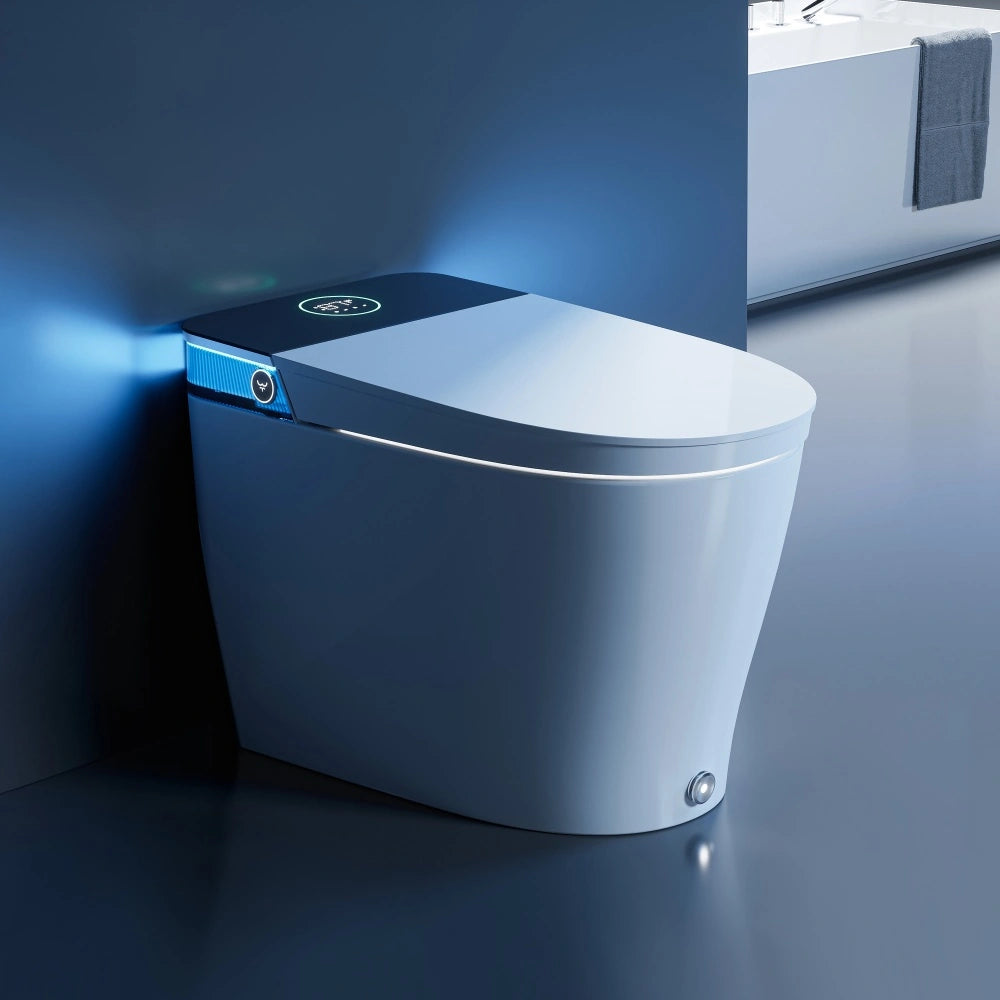
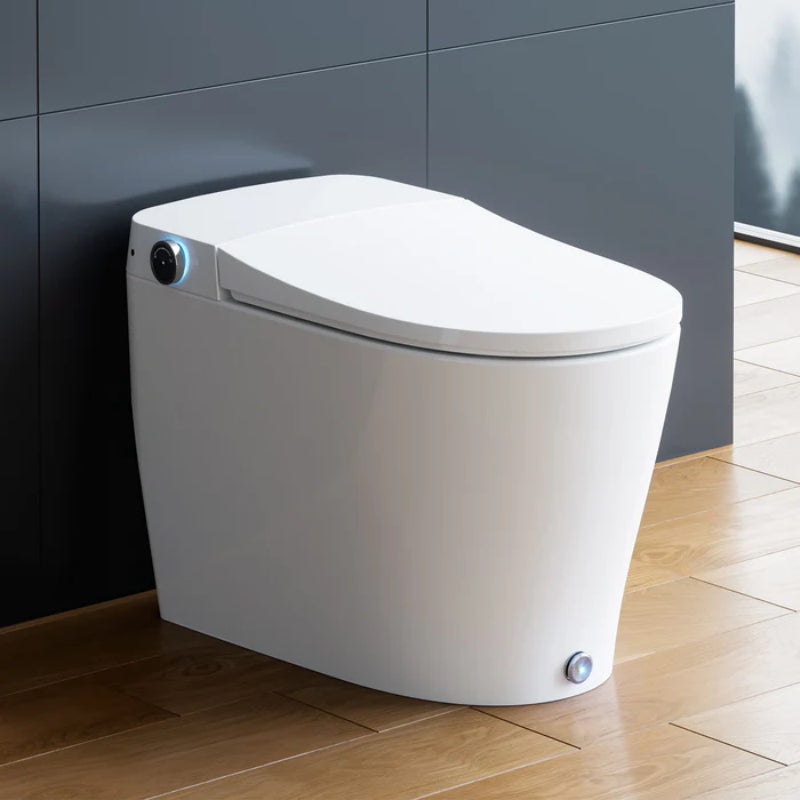
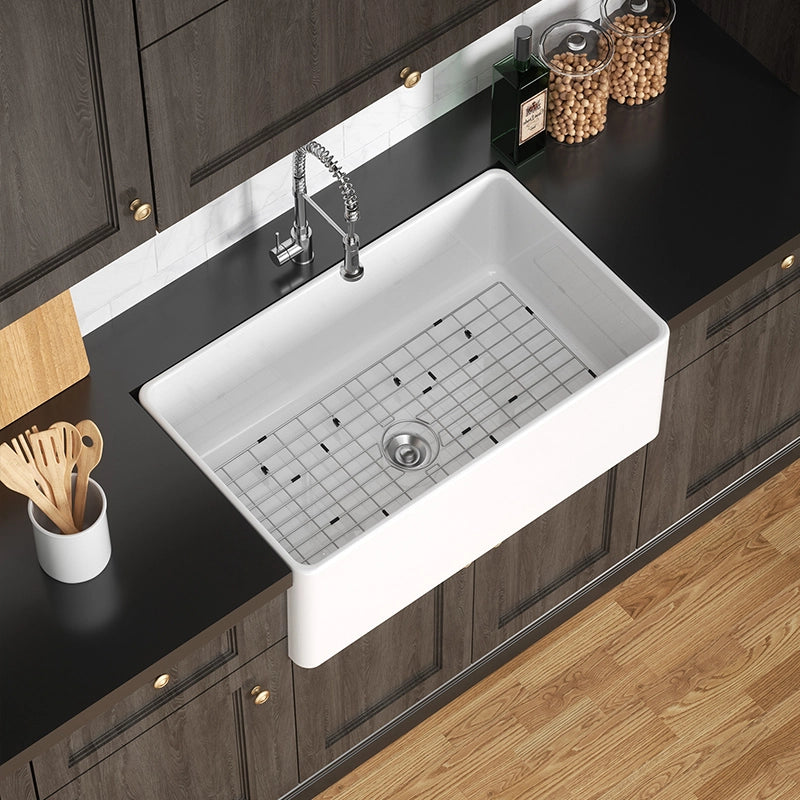
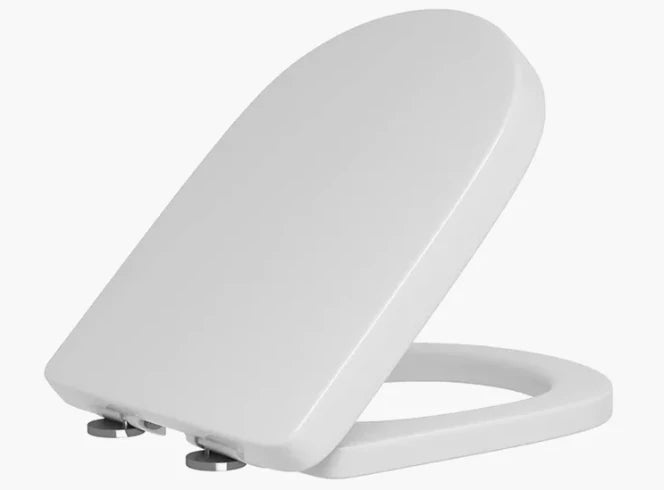
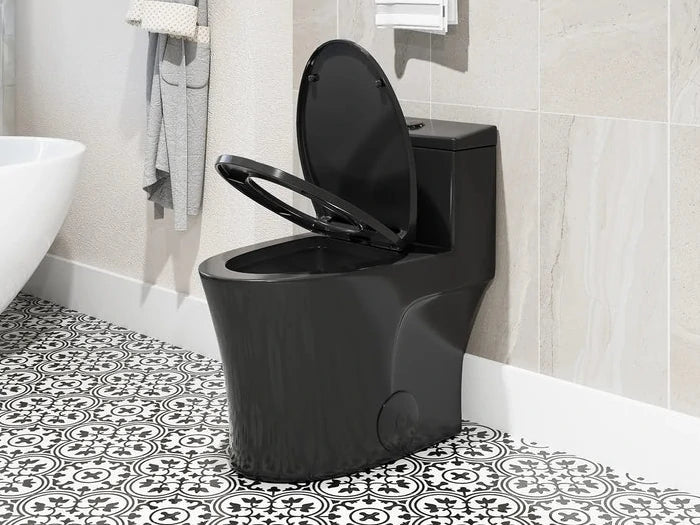
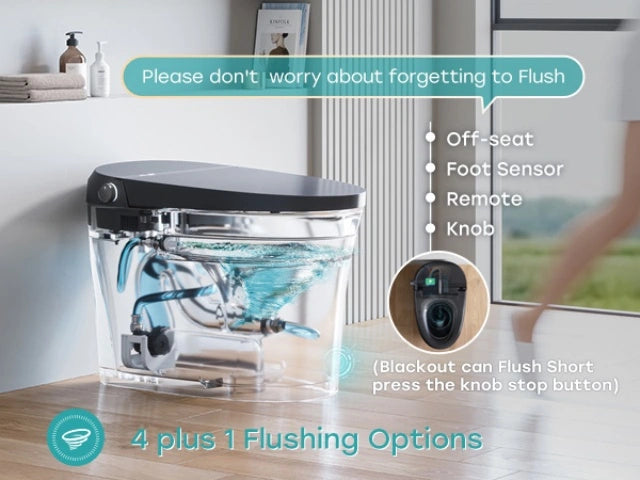

Leave a comment
This site is protected by hCaptcha and the hCaptcha Privacy Policy and Terms of Service apply.